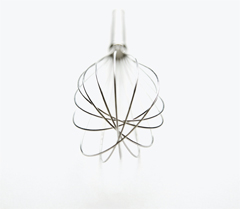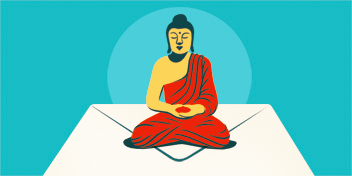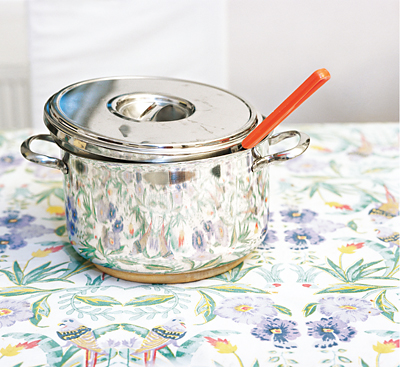Dinners at the Nevada Ranch where Dale and Melissa Kent work as caretakers are potluck. Whoever is visiting or living on the former dude ranch—now a private retreat, set up against the Eastern Sierras— shows up with a big pot of pozole, fresh greens from the garden, handmade tortillas, or a peach crumble made with fruit picked from the orchard outside. The wide-open kitchen is infused with the cheerful spirit of its former owner, Maya, who passed away a couple of years ago at 90; I can still see her kneading the sourdough bread she made in the quiet mornings, doing nothing else with her great intelligence and energy, at those moments, but kneading bread.
The ranch dinners are always fresh, and the various dishes made with love, but I’ve noticed, visiting over the years, that Dale and Melissa’s contributions to the meals taste brighter and are presented more beautifully than, say, the goat cheese and crackers I plop onto a plate. Even their simplest dishes, mere vegetables cooked with some olive oil and salt, are somehow transformed; they’re not just yummier, they’re mysteriously more satisfying to the soul. Nor do the Kents ever seem frantic getting something to the table on time, fret about the result, or burn anything in their haste to finish cooking already. It’s as if their food is seasoned with grace.
That cooking magic has something to do with the fact that they spent seven years at Tassajara Zen Mountain Center, the renowned Buddhist monastery in California’s Ventana Wilderness, where Dale did a two-year stint as tenzo, head of the kitchen. Tassajara has a long lineage of great cooks and cookbooks starting with Zen priest Edward Espe Brown and his Tassajara Bread Book (1970) and subsequent works (his Complete Tassajara Cookbook will be released in September, along with a revised Bread book), and including Deborah Madison (who wrote The Greens Cookbook with Brown, along with her own books The Savory Way, Vegetarian Cooking for Everyone, and others) and Annie Somerville (Fields of Greens andEveryday Greens). Like these other Tassajara cooks, Dale and Melissa Kent don’t just practice cooking; they’ve made cooking a practice, one that benefits not only what is on their plates and in their bellies but what is in their hearts.
The Kents now offer their next-generation Zen-inspired cookbook, Tassajara Dinners & Desserts (Gibbs Smith), which sets down recent recipes from the monastery, along with their own thoughts about mindful cooking and words of wisdom from guest cooks who have passed through those gates. The recipes are simple, calling for improvisation, and focus on seasonal, organic, and local ingredients, as well as some ethnic and exotic ingredients that are more readily available now than they were at the time of earlier Zen cookbooks.
Each time I relished their meals, I wondered whether I could also learn to cook more mindfully—but without spending years in a monastery. My cooking is usually messy and distracted, except when I make soup, because you can’t screw up soup, and something about chopping vegetables and tossing them in a pot restores my calm and equanimity. But I never know how anything else will turn out: when I made my great-grandmother’s recipe for fig-filled cookies shaped like delicate sand dollars, for instance, the friend I was baking with observed that mine came out looking like “mud huts.” My scattered haste in the kitchen is even dangerous: I once sliced off my entire index fingernail along with the onions. And let’s not discuss what I have burned.
I had no idea how to begin to cook mindfully, or really what that meant. I had an image of slow-motion cooking, of a Zen monk taking an hour to slice one carrot, pausing to breathe, focusing on its texture, color, smell, and the miracle of its being alive, as if studying it on high-grade LSD. I pictured it as cooking in a trance, which struck me, given the knives and heat, as quite dangerous, too.
I asked Edward Brown, whose cookbooks are ragged in my kitchen from twenty years of thumbing through for simple, reassuring recipe ideas, about my notion of slow, mindful cooking. He told me that Zen monks like to eat on time like everyone else. “Some people think they’re being mindful by working very slowly, but they’re confusing being mindful with being quiet, still, and composed—which are different qualities,” he said. “You can work extremely diligently and quickly and be mindful.”
Mindfulness, he says, is more about simply being present when you cook, fully engaged with the food and your relationship to it, from the earth it was grown in to the table. It’s being aware of the food with all your senses, and of how you transform it with your hands, knives, herbs, and heat—making it taste alive, nourishing yourself and those who eat your meals. “Your awareness can be in bringing the activity alive and giving it some energy, vitality, and exuberance,” he said.

When you see Brown cook, as in the 2007 film about him, How to Cook Your Life (from the German director Doris Dörrie), he fairly sparkles with that vitality, passing energy from his body and hands to the bread dough, and vice versa. But I wondered how you accomplish that trick of mindfulness, of making your experience and the food you cook come alive, when the temptation in busy times is to put packaged meals into the microwave, carelessly throw together a sandwich while on the cell phone, or, for special occasions, fearfully measure and rigidly follow a recipe, hoping it turns out to be perfect.
Being a Zen priest, Brown didn’t offer me any easy answers, only a few ideas to chew on. “Mindfulness is much more about receiving your experience than dictating it,” he told me. “Most people’s habits of mind and activity, when it comes to cooking, are about making it come out the way it’s supposed to, rather than receiving and appreciating it the way it is.” The mindful focus is more on the kale in your hands—its curly leaves, earthy smell, and deep-green color—than on the casserole you hope will come out of the oven crisp and browned at precisely seven o’clock.
Brown offered a quote from Zen master Tenkei about how to cook mindfully: “See with your eyes, smell with your nose, taste with your tongue.” That sounds obvious, but cooks are often so used to going through the motions, so focused on a recipe, a habit, or the product of our efforts— not to mention a million other distractions—that we forget to stop and experience the food we’re cooking. The nature of awareness, Brown says, is to resonate with the object of awareness; with cooking, it is responding to the food you choose in the market, wash, and place on the cutting board in the kitchen. It’s establishing a connection to the food, a relationship with it. “You’re waking up to the way things are,” he says. “Smell, see, taste, touch. Start to notice.” His simple recipes aren’t exact instructions for cooking, but permission to experiment and a structure within which to explore a deeper sort of joy of cooking.
Brown’s other instruction about mindful cooking is one he says is classic Zen: “When you wash the rice, wash the rice; when you stir the soup, stir the soup.” Give your attention to what you’re doing, rather than to the preoccupations and daydreams scampering through your mind. “This is what some people call reinhabiting your body—extending your consciousness into your feet and hands, finding the life and vitality in your body and activity, rather than going through motions so it’s a chore and drudgery.” With cooking, you can use your awareness to inhabit physical movements that may be new, he says—cutting, washing, examining, mixing, folding—until, with practice, there is an invigorating flow of energy in those physical experiences, a delight.
Such energy, focus, and wholehearted attention nourishes yourself and those you feed, Brown writes in the introduction to his new Complete Tassajara Cookbook: “Cooking is not just working on food, but working on yourself and other people.”
Dale and Melissa Kent, who met at Tassajara in 1997, were both attracted to the monastery partly because of the cookbooks; the way to their hearts, they said, was through their stomachs. “I found the Tassajara Bread Book in a used bookstore and wrote to the address on the back,” said Dale. A promising philosophy student, he confounded everyone in his life by finding work as a baker instead of going to graduate school. “I was following my breath while doing repetitive tasks, and feeling real peace,” he said. “The Tassajara Bread Book described what I had been doing and encouraged me to pay attention, to treat pots and pans and knives as friends. Its poetry and sweetness spoke to me.”
After two years at the monastery, Dale began to work in the kitchen. At Tassajara, monks work in silence, except for occasional functional speech (“What’s burning?”). From the various tenzos he cooked with, Dale says, he learned different lessons—how to taste food and pay attention to the details of a dish, when to salt, how to be generous and fearless, how to plan and move quickly, how to be playful, and to be patient. He also learned how energy, intention, and mood affect what you cook. “If someone was angry and making the bread, they would turn out these angry little loaves of bread.”
I wondered how cooking mindfully would be different outside the monastery, whether it would be more difficult to have a sense of spirituality in your own kitchen. Melissa, who was ino, or head of the meditation hall, told me that cooking is actually a reminder that the spiritual is always at hand. “When you cook mindfully, you’re honoring an everyday activity as sacred, and an opportunity for peace,” she said. “When people elevate time in the meditation hall above time doing the dishes, they’re missing the point. There’s nothing special about meditating in a monastery.”
Annie Somerville, who was tenzo at Tassajara and has been chef at Greens Restaurant for 28 years, says her experience at the monastery grounded her for cooking in the rest of her life. “It’s the hidden storyline,” she says. “All those years of Zen practice were great life training for experiencing all the things that have come my way.” But her practice now is in the restaurant kitchen. “The reason I’m in the kitchen and not sitting in the zendo is that I like to run around,” she says. Cooking, she says, is fully engaging and sharpens her sensory attention—she can see when pasta is done, smell when the vegetables are roasted, and knows the onions are ready because they’re translucent. That kind of attention can be freeing for home cooks, too, she says. “For a lot of people, cooking is a wonderful release from the stresses and strains of your daily life. It’s an escape to get into the kitchen, to make food that is delicious and nurturing and beautiful, and to be involved in that process from beginning to end.”

Deborah Madison, whose new cookbook is called What We Eat When We Eat Alone (Gibbs Smith), cooked at the Zen Center in San Francisco, Tassajara, and Green Gulch for 18 years; when she left, she found that cooks could be as mindful in a chaotic atmosphere as in a silent one. “When I went from Zen Center to Chez Panisse, there was opera playing, and people coming through saying hello to each other, but the cooks were in some ways even more focused than in a Zen Center kitchen.” Mindfulness, she says, is about intention and focus, and isn’t dependent on externalities in the kitchen, including silence.
Madison, who lives in New Mexico, says she no longer even consciously thinks of her cooking as a spiritual practice. “I don’t use those words,” she says. “But when I go into the kitchen to cook, I enjoy a calmness and the connection I feel with food I’ve grown myself or that comes from a rancher down the road. There’s a shift in me when I cook with that kind of food, and I always recognize it when I see it in other people’s food—there’s a brightness, cleanness, and energy.”
Madison doesn’t use the word “mindful” about cooking much, either. “It can sound scoldy, like ‘Pay attention!’” But the benefits of awareness in the kitchen are clear to her. “Whenever you’re doing something with awareness, it’s a two-way street; things talk back to you. In the kitchen you get a lot of immediate feedback, and consequences to your actions. You have sharp, hot things, you check your email and your turnips are burned, you cut yourself, or you have wonderful tastes.” Cooking, she says, is a wonderful opportunity to observe—the food, yourself, and the magic that can happen between the two.
“People feel so frazzled about their lives, and being in the kitchen, putting dinner on the table, even if it’s simple steamed vegetables, is a way to step into another world and out of that chaos,” she says.
Dale and Melissa and I decided to make dinner together so I could learn something not only about how to follow their recipes but also about their practice of mindfulness in the kitchen. It was a chilly winter day in Nevada, snow barely sticking to the ground. I have little experience with formal spiritual practice— Vipassana meditation and a little yoga—and so was worried I couldn’t cook alongside a couple of Zen pros without revealing myself as a slob, both spiritually and as a cook. But Melissa told me to relax: we were just going to make some pizza.
We started by cleaning all the counters and washing our hands, which had a ritual feeling to it. “You lay everything out very carefully that you’re going to use for the meal,” Dale said. “Before you pick up a knife, you stand and feel your feet on the ground and take a few deep breaths, bring your attention into your hands and to what’s on the cutting board.” We turned off the music to focus on the cooking, though they often cook with music on.
We began by dissolving yeast into water, which sounds simple. But Dale’s yeast started to bubble alive, and mine did not. He’d said the water should be body temperature, and in my impatience I’d tossed the yeast into hot water without feeling how warm it (or my body) actually was. I started over. When my yeast began to bubble in the water, too, I added flour and salt. I measured from Dale’s recipe into my bowl, while he just threw the ingredients into his, telling me to respond more to what I saw in the bowl than to the exact measurements he had written in his book. He showed me how to fold the ingredients together gently so that the proteins in the flour would stay long and pliable, until we had what he calls a “shaggy mass,” which was slightly sticky to the fingers. He turned his dough out onto the floured counter, and it bounced around in his hands as if it were alive. Mine needed coaxing. Dale told me to be careful to keep all my dough together, not some on my hands or the side of the bowl, because they didn’t like to be separated. It sounded like he was speaking about little creatures. Dale turned his ball of dough into an olive-oiled bowl. “You go!” he told it. Then he looked at me a little sheepishly. “Some people would say you pray over the dough. It’s about the power of intention.”
“You go!” I said to my dough.
The dough rose, we gently spread it out, nice and elastic, and topped it with what we had at hand. The pizza turned out crusty and flavorful, one sprinkled with onion confit and oozing Gorgonzola, another with tomatoes, anchovies, and olives. Somehow, after having worked with the dough and noticed its texture and its response to my fingers, I found that the pizza tasted better.
Two days later, I tried making pizza myself. It was my birthday, and I have a tradition, borrowed from the Italians, of offering a meal to my friends on that day. So I invited 30 or 40 people over and began preparing that morning. I had just absorbed all this good advice from Zen master cooks, so I felt pretty invincible. I was looking forward to having some relaxed time to enjoy the twin benefits of mindful cooking that Melissa had described, of combining peaceful space with yourself with cooking healthy, delicious food and nourishing your friends.
I began by preparing all the ingredients carefully and putting them into pretty little bowls for later on. I kept in mind what Annie Somerville had suggested about doing things ahead of time to make the experience more enjoyable. “Break a dish down into its elements,” she said. “Then when the time comes, it’s easy, because you’re ready. Everything is in the prep work.”
So for a couple of hours I shredded mozzarella cheese, stirred a simple tomato sauce, tore arugula, sliced anchovies and prosciutto (the Tassajara cookbooks are vegetarian, but I am not), and assembled all the other pizza toppings. My kitchen was calm and orderly, and I felt a tremendous sense of well-being, especially given that I was a year older that day, and already in my late forties.
Then I started in on the dough. I felt my skin temperature, felt the water, and sprinkled the yeast in the bowl. It bubbled up just right. Then I realized that I hadn’t actually written down the recipe for the dough. All I knew was flour, water, salt, olive oil in the pan. I called Dale: no answer, and no reply on Melissa’s cell phone. No one answered email. I tore through a bunch of recipe books, but none seemed to have the same recipe as the pizza dough I’d made with Dale. I opened Brown’s Tassajara Bread Book for advice and got angry that he hadn’t thought, in 1970, to include pizza: What? Pizza isn’t bread? Then I grabbed his Tassajara Recipe Book and found this:
The truth is you’re already a cook.
Nobody teaches you anything,
But you can be touched, you can be awakened.
Put down the book and start asking,
“What have we here?”
So I took a deep breath and looked. I added flour and salt, and looked some more. I tried to create a shaggy mass. I felt how sticky the dough was. I oiled the bowls and put the dough somewhere warm, perhaps too warm, to rise. It rose and rose. I cut it into quarters, made little balls, patted them around, placed them on greased cookie sheets, and they rose some more. I put them in the fridge to stop their promiscuous reproducing, and there they combined into one big, flat blob. The dough was sticky and exuberantly unruly. It was suddenly five o’clock, and my guests were coming at six. Maybe I could just serve them a lot of wine and olives, stick a few crackers on a plate with some cheese.
Then I picked up a ball of dough and added some flour. “It’ll be all right,” Dale said when my dough at the ranch had been too blobby. The dough seemed like it would be forgiving. So I worked the dough until it felt more like something you could make pizza out of. Then I greased some pans, spread it out, spun some around for an added Italian effect before laying it out to bake, and added toppings. “You go,” I said before I put it into the oven.
My friends arrived, and the kitchen was full. The pizza came out fine. It was not great; it didn’t have a perfect crispy crust, it was a sad cousin to Dale’s pizza, and it will take some practice. My friends, on the other hand, were wonderful. They threw themselves into sprinkling toppings onto crust, cutting the pies, checking the oven, and eating square after square of different pizzas. Full and content, they talked and laughed and sparkled and even cleaned up afterward as a gift to the cook. It seemed like magic, the way everyone loved that imperfect pizza party.
“The real magic,” Brown writes in the introduction to his Complete Tassajara Cookbook, “is that you could grow kind, generous, and larger-hearted in the process of preparing food—because you give your heart to the activity. You are realizing yourself by realizing food. Instead of looking good, you are becoming you.”
Thank you for subscribing to Tricycle! As a nonprofit, we depend on readers like you to keep Buddhist teachings and practices widely available.

